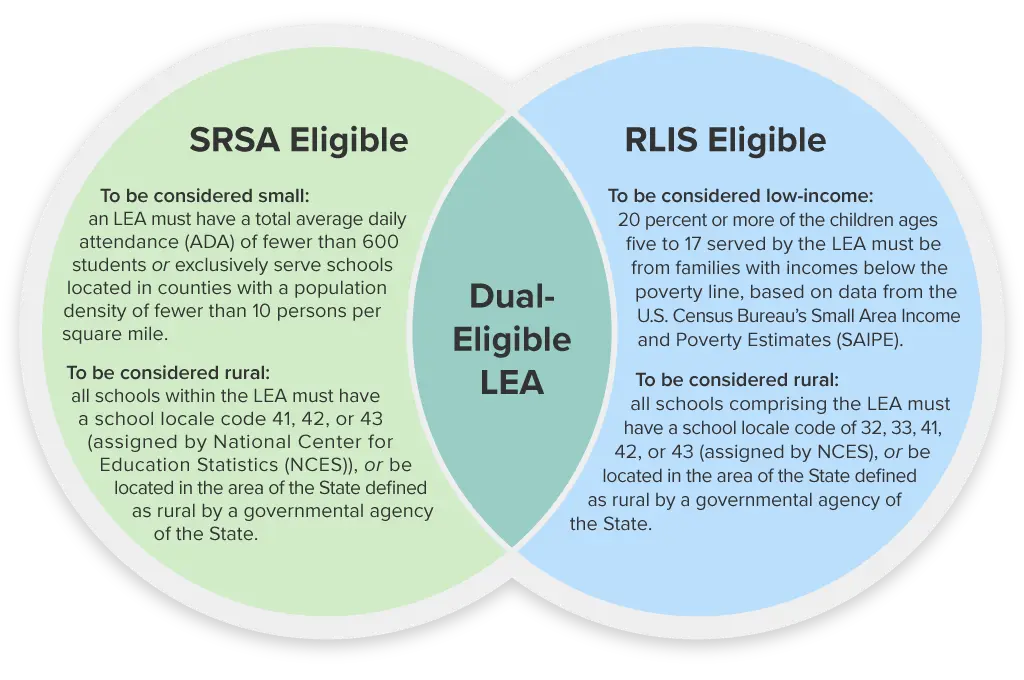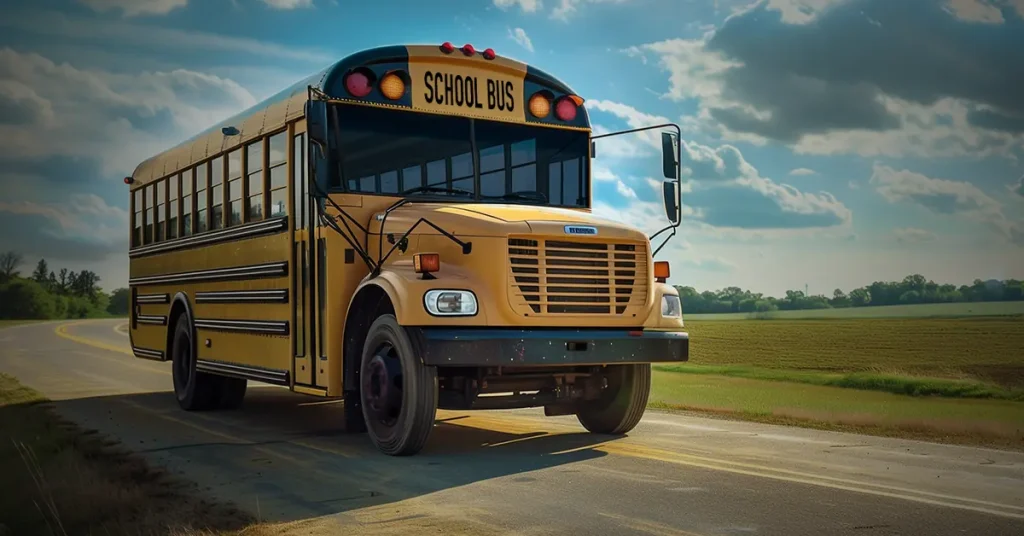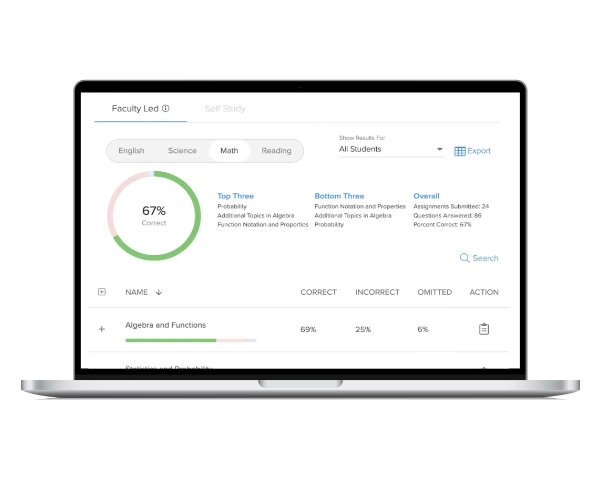A Tale of Two (Types of) Cities
AP courses provide many students with a path to college success, offering them the chance to earn college credits, save on tuition, and develop critical thinking and time management skills. AP participation can improve college admissions prospects, offer an opportunity to explore potential degree majors and career pathways during high school, and even lead to merit-based scholarships.. For many students, AP courses are a vital step toward higher education.
However, these AP opportunities are often out of reach for rural students. While 90% of urban and suburban high schools offered at least 1 AP course in 2001, only 56% of rural schools did.1 By 2015, the rural figure rose to 73%, yet students remained significantly less likely to take AP exams. Geographic isolation, limited resources, and fewer course offerings exacerbate this gap. Some educators would argue that this inequitable access to college readiness courses is part of the reason that only 59% of rural high school graduates enroll in college the fall after graduation, compared to 62% of their urban peers and 67% of suburban graduates.8
Despite progress, research on rural AP access has stalled since 2017, leaving questions about whether gaps have narrowed post-pandemic.2 Efforts to address AP inequities have focused on urban schools and underrepresented racial and cultural groups, but rural students still face unique barriers.
Melanie Harlan, a district administrator from Forney Independent School District in Kaufman County, Texas, explores how her rural district has navigated these challenges.

Meet Melanie Harlan
Texas' Forney Independent School District serves an academic community that has grown from 6,000 to over 16,000 students over the past 10 years.3 With nearly 83% of its graduates marked as college- and career-ready and 44% completing AP or dual-credit courses, Forney ISD is dedicated to providing robust academic opportunities. In 2022, the district celebrated 923 graduates, reflecting its commitment to fostering student success at every level.

Melanie Harlan, the district's Director of Engagement and Higher Education, is at the helm of Forney ISD's higher education efforts. With a focus on AP programs, Melanie plays a pivotal role in coordinating AP registration, managing instructional resources, and supporting teachers in delivering rigorous coursework. Her work extends beyond logistics, as she actively recruits students into AP programs and supports educators in enhancing their teaching strategies.
As the district evolves to meet the needs of a rapidly expanding population, Melanie's leadership helps bridge the gap between high school coursework and college readiness.
Would you describe Forney as a rural school district?
Officially, yes. We are still a rural district, but I'm not sure how much longer that's going to last. There's been a ridiculous amount of growth in Forney. At a recent meeting [with administrators from other districts], however, people were talking about districts that had 5 high schools and tens of thousands of students. And I was sitting there with my 16,000 students thinking, oh, but we actually just got into the 5 digits' worth of students. So maybe we are currently rural-adjacent. But when I started in Forney ISD, back in 2014, I would absolutely have said that we were a rural district.
Could you describe Forney's current AP program?
We offer pretty much all AP classes except the languages — the only language we offer is Spanish. We used to have German, but our German teacher retired and we were unable to find someone to take over that class. We also don't have Psychology at both high schools, but we have all the other social sciences. We finally added AP Physics and AP Calc BC to both campuses. This year we have all the science courses, which is fun.
Unfortunately, we have kind of a situation like “a tale of two high schools,” where one was able to put a lot of energy into AP recruitment, teacher training, and AP teacher support. The other one did not because they had to focus on other priorities. To illustrate that point, one high school has 763 students enrolled in 1,233 AP classes and the other high school has 557 students enrolled in 791 AP classes. There's an even bigger difference in students who have elected to take AP exams. At the second high school with the 557 students in AP courses, 317 AP exams are currently registered, whereas at the first high school with the 763 AP students, they have already signed up for 778 AP exams.
So, in a somewhat rural district that's evolving its AP program, only one high school has been able to close those rural AP gaps. Why do you think this is?
I think that, as it is with most things in education, it has boiled down to money. The first high school with 763 students has only 32% of students on free or reduced lunch, whereas the one with 557 students is sitting at 57% of students on free or reduced lunch.
Putting It into Context: Why Funding Affects the Rural AP Gap

*Source7
Access to AP courses in rural districts is closely tied to funding, which impacts everything from teacher recruitment to technology resources. Unlike urban and suburban districts, which often have larger budgets supplemented by local property taxes, rural districts rely heavily on state and federal funding.4 These funds are often smaller and inconsistent, creating significant barriers to offering AP programs. Limited funding means fewer resources for teacher training, course materials, and essential infrastructure such as reliable internet access, all critical to supporting AP courses.
Federal programs including the Rural Education Achievement Program (REAP) and the Secure Rural Schools (SRS) Act are designed to help bridge these gaps. REAP, the only federal initiative specifically for rural schools, provides $215 million annually to support professional development, technology, and other academic needs.5 Similarly, the SRS Act allocates funds to districts with national forest land to offset revenue losses from declining timber industries.6
In 2023, the Rural and Low-Income School Program, a sub-program of REAP, distributed over $107 million to rural districts.4 While these programs are vital, they are often insufficient to match the needs of rural schools, leaving administrators to seek creative solutions or rely on limited state funding, which is under threat amid debates about the future of the Department of Education.
How can rural districts like Forney close AP accessibility gaps without access to a comparable level of district funding?
As a district, we're currently exploring some possibilities with both AP and dual credit coursework, and looking into related ways to use them to better serve our students. But there are some challenges that go along with a dual credit approach. What if a student wants to go to a college that is not in Texas? There's not really a guarantee that colleges or universities that aren't in Texas are going to accept those dual credits as whatever the course was. And so, if a student is only doing dual credit, it could potentially limit them to only public universities in Texas or maybe Oklahoma. Colleges have gotten really picky about what they'll give credit for.
Is it difficult to recruit AP teachers to rural districts?
A lot of closing the AP rural gap falls on getting quality educators to get out of urban and suburban areas and their willingness to move further out. There are some great funding sources, grants, and those kinds of things for rural areas. But I don't know that it will ever be enough. AP teachers can go to large city districts where they may have the potential of making a six-figure salary. Meanwhile, we rural districts can tell them we start at $60,000! Sure, people want to come and work in Forney because of things that we have put in place. But I also know those people mostly come from our small neighboring districts. There's a lack of funding at the state level and often a lack of support for public education from local communities.
What Needs to Happen to Close Rural AP Gaps
Addressing the rural AP gap is a complex challenge with no simple solutions, as funding disparities between rural and urban/suburban districts are deeply rooted in systemic inequities. While initiatives such as dual credit courses offer some promise, they present challenges of their own.
Dual credit is not always recognized by out-of-state universities, and students completing these courses without taking AP exams may lack a measurable gauge of college readiness. Research has shown that students scoring 3 or higher on AP exams are more likely to succeed in college, highlighting the importance of AP's nationally standardized framework for academic preparation and future success. Leveraging technology may offer a potential pathway forward.

What is a solution to closing AP accessibility gaps in rural areas?
It does come back to money. I don't know the solution to that because that's basically like saying, what's the solution to poverty? Even without all of the funding, just simply having the technology makes things easier. I think the technology has been a huge boon to getting students ready for test sessions, regardless of teacher efficacy. And so I think schools providing technology access can help bridge some of those AP accessibility gaps.
How might technology play a role in closing AP accessibility gaps?
From an ideal world perspective rather than a realistic standpoint, every student would have a discussion with a counselor, teacher, or whoever it is that's helping them figure out their degree plan. Then, for those AP classes that the student needs to take but the district can't get an AP teacher for, you can have a student co-op. A bunch of schools would come together and have a virtual kind of situation where they would log in at a certain time and listen to a lecture or a lesson or whatever. If it was a science class or something that needs hands-on components, kids could be sent to school with directions given by the same online teacher working with an entire co-op of schools. These kids would essentially form a little virtual community of AP chemistry students, and they could have their technology devices set up with their lab partners and their own lab kit. Other students from their co-op would be at their school with their lab kits. All of these students could share data, and that would very realistically solve the problem of access to AP courses in rural communities because you wouldn't need to have at least 15 kids to make a class or to struggle to find teachers in-district for that section.
Kids sign up for these classes, and it really wouldn't have to be a geographically local cohort of students. Everything would be online, so it could be a co-op partnership between the school district and whoever is providing these classes outside of the district. That could go a long way toward providing AP access to students who wouldn't normally have it.
Why We Should Care About Rural Access to AP Courses
Denying rural students access to AP courses perpetuates a cycle of limited opportunities, narrowing their pathways to college and future careers. While urban and suburban students benefit from extracurricular activities, enriched coursework, and strong academic networks, rural students often face barriers that keep them from exploring their capabilities.
Expanding AP access is about more than college credit. It's about ensuring all students, no matter their ZIP code, have the chance to explore their interests, challenge themselves, and envision possibilities beyond their immediate surroundings.
Why is it important that kids in rural school districts have access to AP?
Gifted children are everywhere, and they all need proper intellectual stimulation to reach their full potential. I was talking to a director from another district and they told me, “We don't really need to focus on gifted services because we don't have gifted kids.” And I thought, I'm sorry. What? You do have gifted children. You just haven't found them. You are not stimulating them properly so that they can show their giftedness. They haven't had the opportunity.
Urban and suburban kids have all these experiences, whereas rural kids don't. And so that leads to this whole group of children who have the potential to do some amazing things but never get to exercise that potential. They never get to really lean into what they can do because they don't know that they can do it.
It would be as if LeBron James was never given a basketball and if no one had any idea that he was amazing at basketball. Maybe he would have figured out that he was pretty good at sports. But had he never been given a basketball, he would have never found his gift. I look at these kids and think, if they're never given the opportunity to take AP Calculus, how are they going to find out that they're a math genius? But hey, some people think maybe our students shouldn't get access to AP Calculus because we apparently “don't have gifted children in rural communities.”

References
- College Board. (n.d.). Discover the benefits of AP. Retrieved from https://apcentral.collegeboard.org/about-ap/ap-a-glance/discover-benefits
- College Board. (2023). Advanced Placement rural access gap substantially narrowing. Retrieved from https://newsroom.collegeboard.org/report-advanced-placement-rural-access-gap-substantially-narrowing
- OnDataSuite. (n.d.). OnView Data Portal. Retrieved from https://onview.ondatasuite.com/?hash=rvrPstphXVaX2SYq
- BroadbandUSA. (n.d.). Department of Education Rural Low-Income School Program. Retrieved from https://broadbandusa.ntia.gov/resources/federal/federal-funding/department-education-rural-low-income-school-program
- American Association of School Administrators. (2023, December). The Advocate: Critical funding for rural schools. Retrieved from https://www.aasa.org/advocacy/blog/the-advocate-december-2023-critical-funding-for-rural-schools
- Will, M. (2024, August). A funding lifeline for rural schools is at risk—and not for the first time. Education Week. Retrieved from https://www.edweek.org/policy-politics/a-funding-lifeline-for-rural-schools-is-at-risk-and-not-for-the-first-time/2024/08
- U.S. Department of Education. (n.d.). Rural Education Achievement Program: Considerations for dual-eligible LEAs. Retrieved from https://www.ed.gov/grants-and-programs/formula-grants/rural-education-achievement-program#Considerations-for-Dual-Eligible-LEAs
- Gettinger, A. (2019, March 6). One reason rural students don't go to college: Colleges don't go to them. NPR. Retrieved from https://www.npr.org/2019/03/06/697098684/one-reason-rural-students-dont-go-to-college-colleges-don-t-go-to-them




